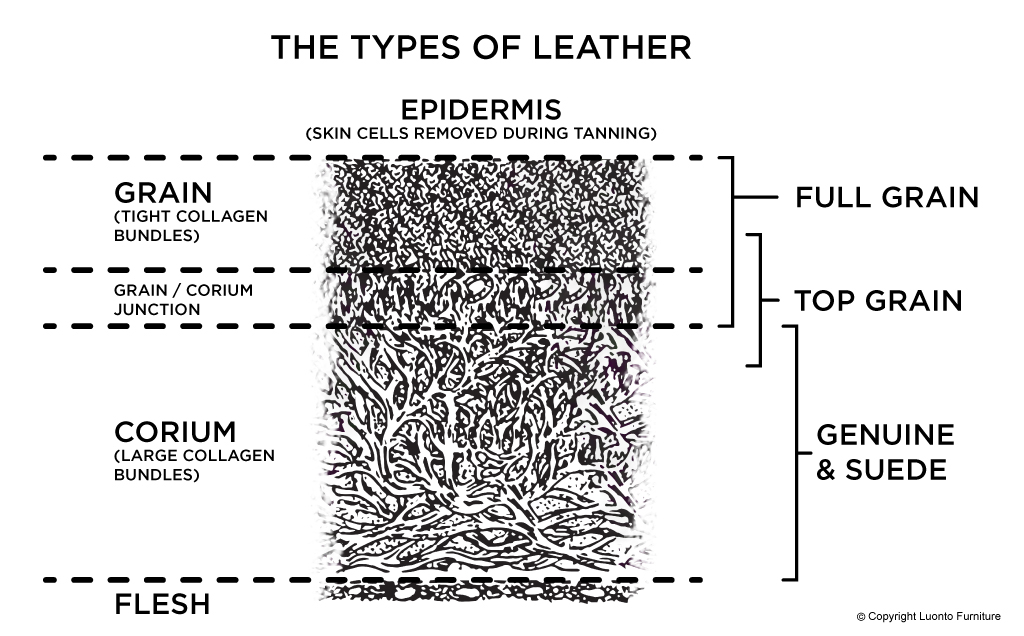🎧 Introduction
Leather-working is an ancient craft that dates back to prehistoric times. Today, it's more important than ever to understand the different types of leather when buying leather products. This knowledge can help you make informed decisions and ensure you're getting the best quality for your money. This leather buying guide will help you navigate through the various leather types and grades.
About Cowhide Leather
Cowhide leather is the most common type of leather. It's known for its thickness and durability. Cowhide consists of two main integrated layers: the corium and the grain. The grain is the outer layer that you see, while the corium is the inner layer. Understanding these layers is crucial when discussing different leather grades.
Leather Grades
There are four main grades of leather: Top grain, Full grain, Split leather, and Bonded leather. Each grade represents a different level of quality and has its own unique characteristics:
- Top Grain Leather : This is the second-highest grade of leather. It's sanded and refinished to remove imperfections.
- Full Grain Leather : This is the highest grade of leather. It includes the entire grain layer, hence the name "full grain."
- Sueded / Split Leather : This is made from the corium left once the top grain has been separated from the hide.
- Bonded Leather : This is the lowest grade of leather. It's made from leftover scraps that are reconstituted to create a seamless piece of leather.

Top Grain Leather : The Best for Leather Furniture
Top grain leather is considered the best type of leather for furniture due to its durability, longevity, and aesthetics. It's more flexible and easier to work with than full grain, making it a popular choice for items requiring detailed upholstering and finishing.
Diving Deeper into Leather Education
There are three general categories of grain leathers: aniline, semi-aniline, and protected. Each category has a different level of dye and protection, affecting the leather's appearance and durability. Additionally, understanding the uses of split leather and the quality of bonded leather can help you make more informed purchasing decisions.
- Aniline Leather : This type of leather is dyed exclusively with soluble dyes without covering the surface with a topcoat paint or insoluble pigments. The resulting product retains the hide's natural surface with the 'grain', i.e., visible pores, scars etc. of the complete original animal's skin structure.
- Semi-Aniline Leather: Semi-aniline leather is more durable than aniline whilst still retaining a natural appearance. The increased durability is provided by the application of a light surface coating which contains a small amount of pigment. This ensures a more consistent color and adds a slight protective layer.
- Protected Leather: Also known as pigmented leather, it is the most durable but is less natural in appearance, having a polymer coating. The coating, which has a pigment, gives more protection to the leather substrate by making it resistant to scuffing or fading.
How to Spot Fake Leather
With the variety of leather products on the market, it's important to know how to spot fake leather. Be aware of terms like "faux leather," "leatherette," and "synthetic leather" – these are not genuine leather. Also, be cautious of inconsistent use of terms in the leather industry.
Understanding the different types of leather and the processes behind their production can greatly enhance your shopping experience and satisfaction with your purchase. Don't be afraid to ask questions and dig deeper – after all, knowledge is power when it comes to buying leather products.


